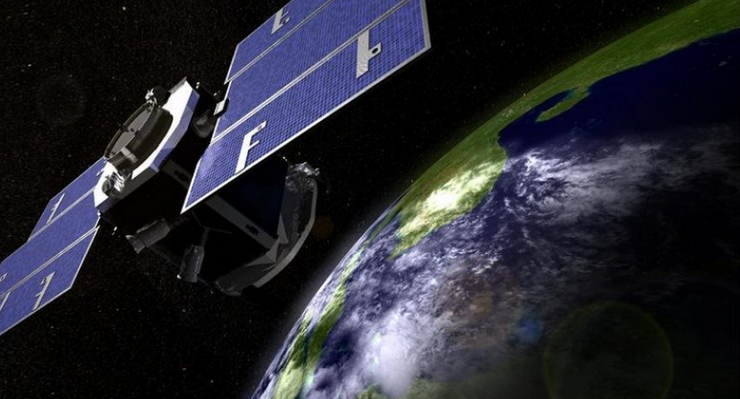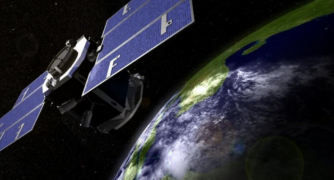
An artist’s concept shows NASA’s CloudSat spacecraft in orbit above Earth. Launched in 2006, it provided the first global survey of cloud properties before being decommissioned in March 2024 at the end of its lifespan. [Credit: NASA/JP]
After 17 years of pioneering observations, NASA’s CloudSat mission, managed by the Jet Propulsion Laboratory in Pasadena has come to an end.
Launched in 2006, CloudSat’s Cloud Profiling Radar instrument was developed by JPL with important hardware contributions from the Canadian Space Agency, providing unprecedented insights into the inner workings of clouds and their influence on weather and climate.
“It’s part of who we are as a NASA family that we have dedicated and talented teams that can do things that have never before been done,” said Deborah Vane, CloudSat’s project manager at JPL.
The mission faced several potentially mission-ending issues related to the spacecraft’s battery and reaction wheels, but the CloudSat team at JPL devised innovative solutions, including “hibernating” the spacecraft during nondaylight portions of each orbit to conserve power and orienting it with fewer reaction wheels, keeping the satellite operational until the radar was permanently turned off in December 2023.
CloudSat’s data has informed thousands of research publications, revealing the global frequency of rain and snow production by clouds, their ability to cool and heat the atmosphere and surface, and their role in accelerating ice melt in Greenland and at the poles.
The mission also provided valuable insights into the intensification of powerful storm systems like hurricanes Maria, Harvey, and Sandy.
Launched in tandem with the lidar-carrying satellite CALIPSO, CloudSat was part of an international constellation of weather- and climate-tracking satellites. JPL’s Cloud Profiling Radar instrument and CALIPSO’s lidar worked together to study the vertical structure of the atmosphere, examining thin and thick clouds, as well as layers of airborne particles that influence cloud formation.
As Earth’s climate continues to change, the legacy of CloudSat and CALIPSO will be carried forward by future missions like NASA’s recently launched PACE satellite and the upcoming Earth System Observatory. “Continuing these measurements will give us new insights into changing weather patterns,” said Graeme Stephens, the mission’s principal investigator.
CloudSat’s success is a testament to the expertise and dedication of the team at JPL, which developed the mission’s groundbreaking radar instrument and managed the project for NASA. With important hardware contributions from the Canadian Space Agency, support from Colorado State University, BAE Systems, the U.S. Space Force, and the U.S. Department of Energy, as well as collaboration with universities and research centers worldwide, CloudSat has left an indelible mark on our understanding of Earth’s atmosphere and climate.














 0 comments
0 comments



